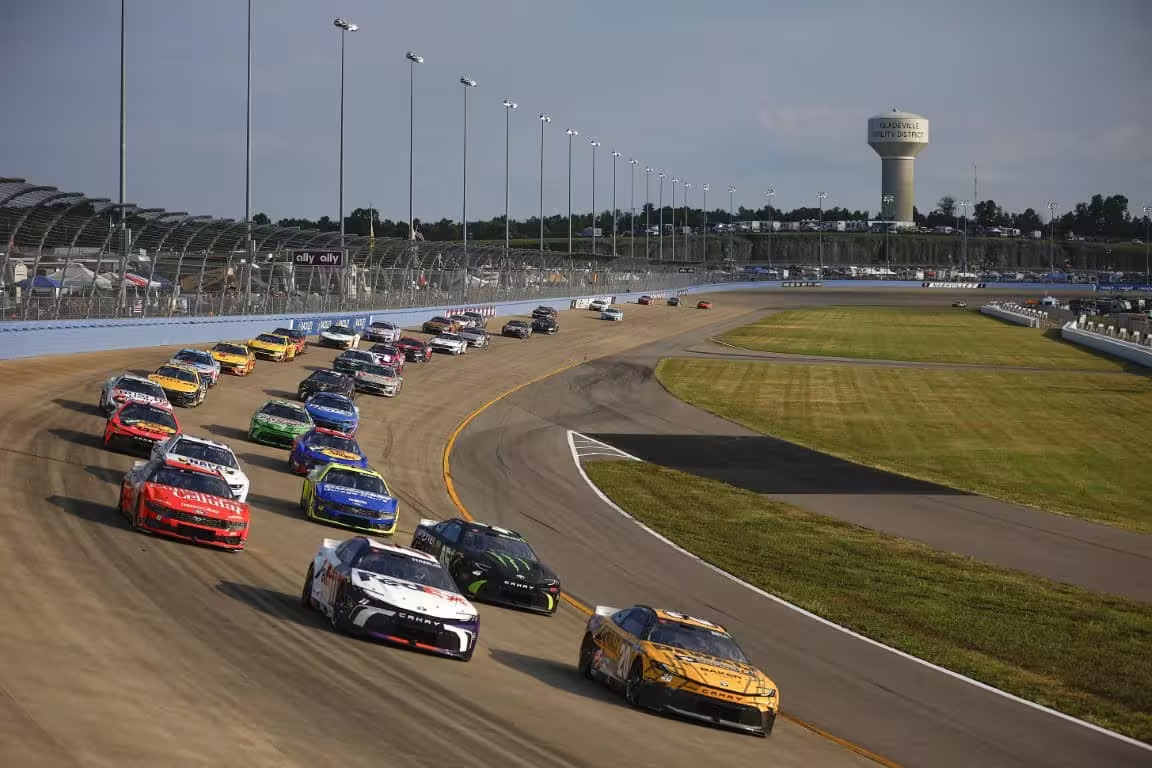Despite racing from February to November, NASCAR racing has long been associated with hot weather. Many a racing video montage has featured cars sliding around a sun-splashed track with heat waves radiating from every surface and drivers dripping sweat while chugging icy beverages. You’d be hard-pressed to find a pale, shirtless fan at a race. Tanning beds are great, but sitting in grandstands are just as effective.
There was once even a line of video games called NASCAR Heat, and while it wasn’t exactly temperature-related, the reference in the name was no accident.
The topic has come up again recently, as the NASCAR Cup Series race at Nashville Superspeedway was run during a blazing hot, sunny day. In modern times, drivers have a bevy of innovative solutions to help them beat the heat. But without all the cool suits and in-car air cooling units, there has always been NASCAR racing in hot weather.
So how did they manage? Staying hydrated is a key factor in performing during harsh conditions, and racing is no exception. As one may expect, drivers would be handed water during pit stops in addition to drinking fluids prior to the race. Some also made visits to the infield care center prior to or after the race to receive fluids intravenously.
Some drivers would focus on conditioning their bodies, albeit in different ways. For example, Mark Martin was a known fitness buff. Martin would work out extensively, building up his strength. He thought that gave him an advantage, as his stamina and focus wouldn’t wear down as quickly as his competitors. While there’s no way to definitively state the effectiveness of his theory, it’s worth noting that 23 of his 40 Cup wins came between May 1 and Sept. 30 of a calendar year.
Bill Elliott was another driver who took his conditioning to another level. Elliott, who grew up in Georgia, would get his body acclimated to spending hours in a hot race car by driving around in his personal car during the summer with the windows up and the heat on full blast. Unusual, but considering how many times he won during the summer at tracks like Darlington Raceway, Talladega Superspeedway and Daytona International Speedway, maybe there was something to his method as well.
Speaking of Daytona, the sanctioning body eventually put an end to one of the hottest races of the year in 1998. For a time, the 400-miler at Daytona was run on the morning of July 4. Even if Independence Day fell midweek, the…
Click Here to Read the Full Original Article at …

